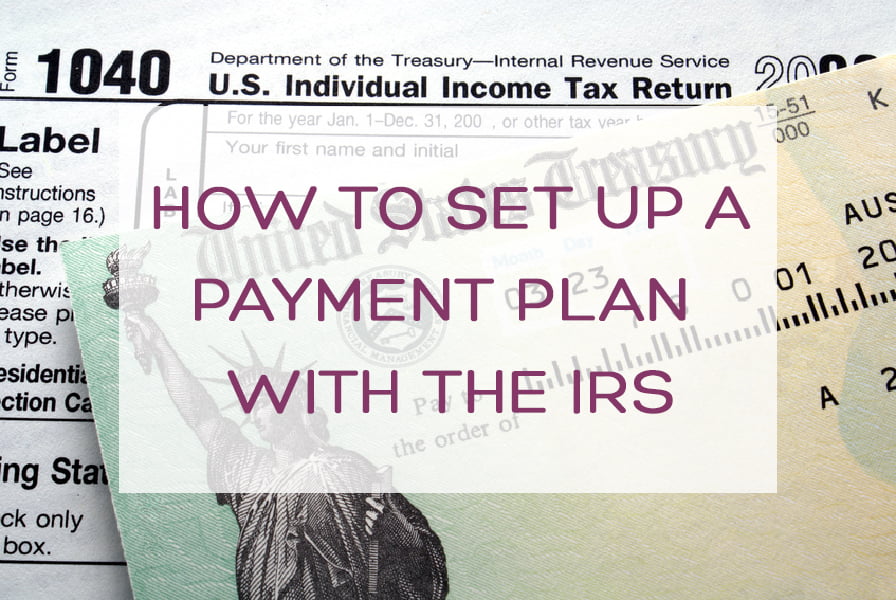 To set up a payment plan with the IRS, you have to file Form 9465 (Installment Agreement Request), and you can do this electronically or on paper.
To set up a payment plan with the IRS, you have to file Form 9465 (Installment Agreement Request), and you can do this electronically or on paper.
With this agreement, you can choose how much you want to pay monthly. Although, it is advisable to pay as much as you can per month to reduce the interests and penalties.
Despite the fact that setting up a payment plan allows you to implement an installment agreement with the IRS, you will still pay due interests and penalties. But you will be exempted from collection actions, like tax liens and tax levies.
The IRS payment plan can be categorized into two which are:
- Short term payment plan
- Long term payment plan
Short-term payment plan:For short-term payment plans, you must pay the amount you owe the IRS within 120-180 days. You can opt for this plan if what you owe is less than $100,000.
Long-term payment plan:Under this plan, you have a time frame of 72 months to pay whatsoever you owe the IRS. A lot of people usually opt for this plan.
You can complete your application online if what you owe (interests and penalties inclusive) is not more than $50000, and you are opting for the long-term plan. On the flip side, if what you owe exceeds $50,000, you will need to file Form 9465 together with another form known as Form 433-F (Collection Information Statement) on paper.
You also have the right to complete your application online if what you owe is not more than $100000 (interests and penalties inclusive) and you are on a short-term plan.
As a result of the effect of the pandemic on the economy, the IRS permitted some taxpayers who owe up to $250,000 to apply online this year.
To set up an installment payment plan, you may be charged a one-time fee depending on the plan you opt for; short-term payment or long-term payment.
If you qualify for the short-term payment plan, a set-up fee will not be required of you.
Certain conditions apply to the Long-term payment plan, and it goes as follows:
- If you apply online and make payment with direct debit from your bank, you will be required to pay a set-up fee of $31. This $31 fee can be waived if your income is at or below 250% of the federal poverty level for your state and you made the payment through direct debit
- If you did not apply online but make your payments by direct debit, you will be required to pay a set-up fee of $107.
- If you apply online but did not make your payments by direct debit, you will be required to pay a set-up fee of $149. However, if you are a low-income earner, instead of paying $149, you will be required to pay $43 only, or the fee will be waived.
- If you did not apply online and did not make your payments by direct debit, you will be required to pay a set-up fee of $225.
A confirmation of your identity is usually required when setting up a payment plan; hence you have to provide the following information when applying:
– Your name (Ensure it is written the same as your most recent tax return)
– Mobile phone number registered in your name or an activation code received by mail
– Social security number
– Account number
– Date of Birth
– Filing status
– Balance due
– Address from your most recently filed tax return
It is understandable if you find setting up the IRS payment plan by yourself overwhelming. Thankfully, you are not expected to figure it out all by yourself. Tax professionals such as Enrolled Agents specialize in anything tax that can walk you through the whole process without hassles.
Now, you have to be very careful when employing the service of a tax professional. You have to ensure that the Enrolled Agent you are working with is licensed.
There are many ways by which you can find a tax preparer, but a viable way is by asking for referrals. Since almost everyone files taxes, it will be a walk in the park to get a very good tax preparer.
Also, there are some top traits you should look out for when choosing a tax preparer which include: excellent communication skills, trust, attention to detail, organization, time management, hardworking amongst others.
Aside from helping you set up an IRS payment plan, Enrolled Agents can also help you make sound financial plans, give suggestions on how you can save on taxes, help simplify the tax code such that you can comprehend, and stand before the IRS on your behalf.
To sum up, the IRS is not out there to make life miserable for taxpayers. They are humans and understand that life can be unpredictable; hence they have various plans, which include the payment plan to ease taxpayers of some financial burdens.







